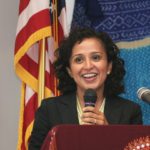What can state government do to reduce poverty in Southern California? What should they not do?
Dunn Poverty Q2

Oddly, state government strategies seem to incentivize poverty: growing government and “free stuff” for residents while promoting by a thousand cuts the overregulation of small business (comprising 95% of the state’s economy), failure to fix systemic problems that result in lack of housing (CEQA, fees, regulations), burdensome public education regulations and lack of choice , and lack of balance in environmental regulations including climate change strategies. For example, instead of fixing the anomalies and better defining employee vs. independent contractor status of workers, for example, state government doubles down on inflexible rules couple with mind-boggling “exemptions” to the rules–instead of allowing for new jobs in a gig economy to flourish. The state should get out of the way, ensuring against force and fraud, but letting new opportunities and innovation flourish. Finally, homeownership is one of the best ways to wealth creation. When homeownership rates are at Great Depression levels for Latinos and blacks, the state does not enable middle class growth.
Kotkin Poverty Q2

The state has to stop its climate jihad. There is no way we will be able to meet our housing and employment with the current regulatory regime. We can meet the Paris agreement levels without forcing up energy prices or adopting policies that other states will be slow to adopt. The state talks about going “all-electric” but then shuts down nuclear and gas plants that provide affordable, reliable electricity.
Salas Poverty Q2

Help pass School and Communities First initiative in 2020 to inject new investments in our schools. Continue to stay committed to wage increases and rent controls. Support equal pay for equal work and incentivize the hiring of companies that demonstrate their commitment to their workers through good wages and benefits. Counter racism and gender inequality in the workplace and in society.
Pastor Poverty Q2

State governments can allocate the monetary resources necessary to ensure that programs and services are set in place for all Californians to thrive. One major issue facing California’s poor is affordable housing, or in this case, unaffordable housing. In California, about half of very low-income renter households and about three-quarters of extremely low-income households pay more than half their earnings in rent. In addition to allocating the necessary monetary resources to supplement deficiencies, the state can also step in and develop policies that expand affordable housing, strengthen rent stabilization measures, and develop programs for social housing. Of course, another way to address housing is through raising incomes and above we have discussed a range of measures that could help; one important and welcome step has been the state’s recent expansion of the earned income tax credit, a program that effectively targets California’s working poor and could be expanded further in coming years.
Foo Poverty Q2

State government can help to bring about policies to encourage local government to partner with communities and businesses to address poverty in a comprehensive manner. All stakeholders should be at the table to give their perspectives and strategies. Cities, affordable housing developers, labor, health care, education, and community need to come together to address investment into reducing poverty. Also, access to higher education and/or living wage job development – community members are working multiple low wage jobs and supporting their children to go to college yet the students leave school with such high debt that the family is forever stuck in poverty. State government should not generalize and make assumptions, they need to work with local government and communities to understand the issues. For example, providing jobs and housing is just one part of the issue, affordable and easily accessible transportation, affordable childcare, wellness and education, are just a few things that need to be included. One thing will just band-aid the situation. It has to be inclusive and comprehensive.
Hernandez Poverty Q2

There are three things state legislators must do now to fight the poverty crisis in California. First, they need to pass legislation that streamlines the construction of affordable and supportive housing while reducing development costs. Second, they should provide additional or reallocate funding for mental health and wrap-around services for local governments to utilize. Third, they should bring back redevelopment with an emphasis on building housing for our very low, low, and market-rate housing markets.
Furthermore, the state government should reform the California Environment Quality Act (CEQA). This law has been hijacked, ultimately stopping the development of the much-needed infill and transit-oriented housing. BizFed took the lead in this effort by partnering with Assemblymember Santiago (AD 53) and Mayor Garcetti’s office by sponsoring AB 1197, which will enable CEQA exemptions and streamlining for supportive housing projects funded under voter-approved measures until 2025. While this is only the beginning, more reforms are needed. This bill will save millions of dollars and expedite the delivery of these critical housing projects to help solve our housing affordability and homeless crisis.
State governments should secure sufficient funding for safety net programs that are essential to lift Californians out of poverty and to ensure that these programs are delivered effectively and efficiently.
State governments should not try to manipulate the housing market by injecting flawed policies such as extreme rent control and stripping away Proposition 13 protections. Many elected officials see these policies as a quick fix, while in reality, these policies do more harm than good by disincentivizing property owners to reinvest in their property and increasing the cost to do business in California, known as the “California Premium.”
Buiza Poverty Q2

Southern California’s intractable problems have been exacerbated by our inability to identify solutions that are multi-pronged and less siloed. A wholistic approach to what drives poverty in the first place, is an important factor in creating a comprehensive map of where resources should go, how to sustain these resources and what equitable sharing of state and county resources, including budgets, ought to look like.
Kulkarni Poverty Q2

In Southern California, we need much better public schools, universal healthcare, public benefit programs and rent control and housing assistance. The State of CA should not put additional funding into prisons, juvenile facilities or law enforcement (that conducts racial profiling, widespread surveillance and assists ICE in detaining and deporting immigrants) but should instead pay for proactive measures that genuinely help low-income people and people of color. The state government needs to require disaggregation of all state data so that the public can see how each ethnic community is doing vis-a-vis white communities.
McKellogg Poverty Q2

Given the role of employment in poverty alleviation, state government can incentivize employment by lessening the impact of the benefits cliff. After families’ employment income increases, state government can adopt a revenue neutral approach through earned income disregards or expanding the Earned Income Tax Credit (EITC). EITC is one of the most effective anti-poverty poverty programs at the federal level and has a parallel state structure in California. Efforts over the last three years to expand California’s EITC have been successful by 1) increasing the income limit to account for the rising state minimum wage; 2) increasing the income limit to $30,000 and; 3) increasing the size of the credit for tax filers with annual earnings at the higher end of the income limit.
The State of California can significantly improve efforts to increase economic mobility and inclusion for families and reduce poverty through the Local Empowerment Fund, a $100 million request to scale results-focused social interventions that lead to greater economic inclusion, security, and mobility of individuals who do not have stable employment or earn a living wage. Through the Local Empowerment Fund (of which REDF is a supporter), the State can use its resources more effectively to accelerate the pace of change and begin to combat economic inequality.
State Governors can also dedicate discretionary Workforce Innovation and Opportunity Act (WIOA) funding annually to employers focused on people at the poverty line, including employment social enterprises which have an innovative service delivery model and contribute to WIOA performance goals.
Jordan Poverty Q2

California’s voter-approved Proposition 47 has successfully reduced incarceration, already saved the state hundreds of millions of dollars and reallocated that money back into local communities to fund proven crime prevention programs. Using Prop. 47 savings, programs have been created in communities up and down the state that are helping address the drivers of crime and preventing it from occurring in the first place. For the first time, California has a treatment and prevention infrastructure that millions of Californians have needed for generations. And crime has remained at historically low levels. Prop. 47’s success offers a glimpse into what would be possible if state leaders committed to focusing as much on prevention as we do on punishment and funded to scale community-based programs aimed at stopping the cycle of crime. Reducing the amount of money the state continues to waste every year on ineffective prisons and meeting the needs of those struggling with mental health issues and addiction, and survivors of crime in need of help dealing with their trauma, will allow us to create safer, healthier and more successful communities. California has a re-entry ecosystem but it doesn’t have a re-integration ecosystem – people re-enter society but there’s no effort to reintegrate them back into the economy. That failure is what drives poverty after incarceration.
Bornstein Poverty Q2

Rutherford Poverty Q2

Jobs lead people out of poverty, and California is chasing jobs and entrepreneurs out of our state every day with over regulation and excessive taxation. In my district, we are losing companies because of the high electricity costs in our state and the unpredictability of environmental regulations. These companies are taking good, solid jobs with them to neighboring states. State officials should focus on reducing the cost of doing business in California rather than adding additional burdens on industries that create jobs and grow opportunity.
Bradbard Poverty Q2

To help reduce the poverty across Southern California, state government should continue investing in programs that work upstream in preparing our next generation for self-sufficiency including education, stable living environments for children and families, mental health, and job creation.
Recognizing the serious need for increased housing stock to address the current affordable housing crisis, I applaud our Governor and state leaders for making housing a key issue of focus. However, we need to think creatively and be open to reforming the current regulations, fees and systemic barriers that reduce the production of housing across the State of California. To maximize the impact of limited dollars, we also need to consider more efficient building designs, repurpose existing underutilized land parcels, and focus on strategies that keep families and individuals off the streets in the first place.
Shelley Poverty Q2

The state government should get out of the way. Every policy that raises the cost of doing business in California is contributing to an increase in poverty.
Swaim Poverty Q2

Liberate markets, reform criminal justice, eliminate CEQA, reform the public-employee pension system, create real school choice with an emphasis on vocational training, make state legislature part-time, end corporate welfare by clamping down on violations of the state’s gift clause, insist on state control over federal lands in California (and make certain that land is harvested and maintained for the present and the future), eliminate green-energy subsidies.
Diep Poverty Q2

It is no longer a republican talking point that people are fleeing this state. Middle class Californians are voting with their feet and calling it quits. Many states across the country are seeing droves of Californians move into their neighborhood. It has gotten so bad in Boise, Idaho that a candidate who ran for mayor wanted to assess a tax just for incoming Californians. We are learning the serious consequences with the net loss migration out of California has. It is projected the state will definitely lose one, if not two or three Congressional seats after this year’s Census concludes. Middle class families are leaving because taxes are too high, housing is too expensive, and homelessness is getting worse. Those with less means do not even have that choice.
California must stop the taxing insanity in order to reduce poverty in Southern California. Businesses are also fleeing this state, taking great paying jobs to those same states these middle class families are moving to. Taxes are too high, and too often I’m seeing more proposals in the Legislature to increase taxes. For example, there are efforts to weaken Proposition 13 protections for apartment complexes that will dramatically increase their property tax bills. Ultimately, this will hurt those with less means, as those costs will be shifted to renters and small business owners who create jobs. Assaulting the middle class will inevitably result in greater poverty. We must do whatever it takes to protect it.
Campbell Poverty Q2

Our proximity to Mexico is a huge plus. We need to facilitate the comparative advantage of each economy in collaborating with the other. The maquiladora programs are but one example. The Inland Empire is one of the greatest trans-shipment hubs in the world; it should be available to Mexican products as well. Agricultural products should move between the two areas depending on comparative availability of water, labor, and export potential. Water desalinization is much more possible in Mexico’s governmental environment than in ours; we should encourage their production and transportation of clean water both for Northern Mexico and for California. What should state government not do? Not make political opposition to the federal government the driver of public policy when there is much that can be accomplished by cooperation.
Painter Poverty Q2

The state government could increase the state EITC. The state should also consider providing a housing voucher to all households that are paying more than 50% of the income as rent to reduce the consequences of poverty. The state should provide more resources to enforce existing anti-discrimination legislation in the labor and housing markets so that all can have better access to jobs.
The state should not ignore the existing structural barriers that have been created tied to racism. There are numerous systems (criminal justice, child welfare, etc) that impact minority populations disproportionately. These structural barriers need to be removed to ensure that opportunity pathways can be activated for all.
Summers Poverty Q2

California’s state government, and many of its local governments, particularly in its largest metropolitan areas, have largely failed to learn the lesson that economic freedom leads to economic prosperity – for all income brackets. While many have been able to generate a great deal of wealth in spite of California’s relatively strict regulation of economic and personal liberties, particularly in the Silicon Valley/Bay Area and Southern California coastal enclaves, the state also suffers from a great deal of poverty. In fact, California has the highest poverty rate of any state (about 18 percent, versus a national average of around 13 percent), according to the U.S. Census Bureau’s supplemental poverty measure, which incorporates cost of living and income from government assistance programs.
The state and local governments make poverty worse by enacting numerous policies that increase the cost of living and reduce the amount of earnings California workers can keep and save, invest or spend on their families. Perhaps the most obvious examples are tax policies. California has not only the highest personal income tax rate in the country, but the highest three brackets (and five of the top 10 rates), the Tax Foundation reports. It also has the highest state sales tax rate in the country (and the ninth-highest rate when average local sales tax rates are included), and the eighth-highest corporate tax rate. And, despite all the hand-wringing among Democratic legislators about Proposition 13, California still has the 14th-highest property tax rate in the nation.
While California’s income tax structure is very progressive – the top 1 percent of earners pay nearly half of all income taxes – numerous other taxes are quite regressive, taking up a larger share of the poorest residents’ incomes, and thus hitting them the hardest. The recent increase in gas taxes has made California the highest-taxed state in the nation, adding more than 62 cents per gallon to the price of gas, not to mention an additional estimated 10 to 12 cents per gallon attributed to the state’s cap-and-trade program and a recent increase in vehicle registration fees. This makes it especially difficult for lower- and middle-income workers who have long commutes because they cannot afford to live closer to work.
Regressive environmental regulations favoring more expensive forms of “clean” energy and state-protected regional utility monopolies have also caused California to have some of the highest energy prices in the nation, which, once again, hurt poorer families the most. Similarly, “sin taxes,” like those imposed on cigarettes, marijuana and even soda, tend to squeeze lower-income families more.
The state and local governments have done much to drive up the cost of housing, the largest asset most people will ever own. This has been one of the primary reasons so many people have fled to lower-cost states with greater economic opportunity, such as Arizona, Nevada, Texas and Florida. According to a March 2015 report from the nonpartisan Legislative Analyst’s Office, California’s housing costs have risen dramatically from about 30 percent above the national average in 1970 to two-and-a-half times the national average today. It also noted that development fees charged to builders (and passed on in housing prices) are three-and-a-half times the national average, costing tens of thousands of dollars more. Excessive building standards and regulations like the solar roof mandate, which could add $10,000 to $20,000 to the cost of a new home starting next year, hike costs even further. A 2016 National Association of Home Builders study estimated that government regulations account for about a quarter of the price of a new single-family home.
Housing costs are increased through a number of other ways as well. Local zoning laws restrict the amount of land that can be developed, driving up prices for housing elsewhere; arduous local planning processes and environmental regulations such as the California Environmental Quality Act make it more costly and difficult to build, similarly restricting supply and increasing prices; affordable housing mandates and rent control laws oftentimes make building unprofitable, further reducing supply or ensuring that only luxury housing is built; prevailing wage laws that mandate union wage scales significantly drive up building costs; and the list goes on.
California also makes it very difficult to earn a living. It routinely places at or near the bottom of multiple surveys of state business climates. Occupational licenses are one way governments reduce job growth and economic opportunity by requiring fees and arbitrary standards that may not even relate well to job performance. In a 2007 study I did for the Reason Foundation, I found that California required licenses for the most job categories of any state (177), nearly double the national average (92).
State and local minimum wage laws similarly cut the bottom rungs off the economic ladder for many people. While they are typically sold as a means of alleviating poverty, this is not supported by the economic literature. Though some who experience a minimum wage boost and keep their jobs may be lifted out of poverty, at least as many will fall into poverty because they lose their jobs or see their hours cut as a result. Still others will never be hired in the first place because they cannot compete with higher-skilled job applicants for the higher wage rate. Moreover, as San Diego State University economics professor Joseph Sabia explains, increasing the minimum wage is a poor way to address poverty simply because so few minimum wage workers are poor. Many are high school and college kids from middle- or upper-income households – about half of minimum wage workers are under the age of 25, not heads of households trying to provide for their families.
The above is just a small sampling of the ways the state and local governments in California make it more expensive and more difficult to live. It should come as little surprise, then, that the state struggles with such high rates of poverty and net migration to lower-cost states offering more economic freedom. Simply removing these barriers to economic liberty would unleash a wave of economic growth that would raise incomes and reduce poverty greater than any government program could hope to achieve.